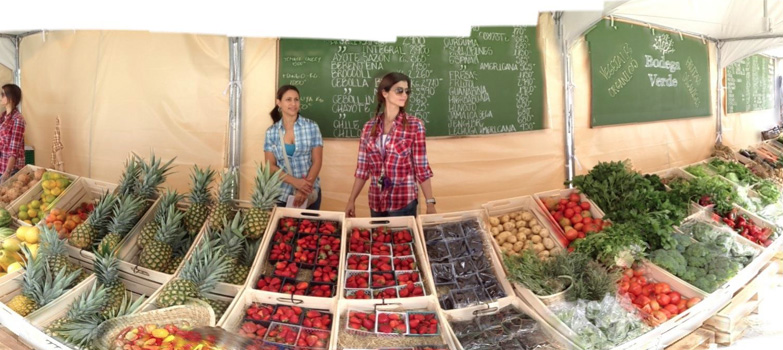Eating Vegetarian in Rural Costa Rica
 For most looking to travel to Costa Rica, the smorgasbord of food available will include a dish centered on meat, either beef, pork, chicken, or fish. For those travelers who wish to eat either vegetarian or vegan food, the idea of dining in a “meat-centric” culture may be daunting. However, the lush tropical surroundings of rural Costa Rica offer more than enough to satiate the palette of any veggie-lover. With a large selection of tropical fruits, vegetables, rice and beans, the vegetarian or vegan traveler can rest assured they will be well fed.
For most looking to travel to Costa Rica, the smorgasbord of food available will include a dish centered on meat, either beef, pork, chicken, or fish. For those travelers who wish to eat either vegetarian or vegan food, the idea of dining in a “meat-centric” culture may be daunting. However, the lush tropical surroundings of rural Costa Rica offer more than enough to satiate the palette of any veggie-lover. With a large selection of tropical fruits, vegetables, rice and beans, the vegetarian or vegan traveler can rest assured they will be well fed.
Here are some easy tips for a vegetarian/vegan lifestyle while traveling in rural Costa Rica:
1. Learn the names of the foods you’d like to consume in Spanish so you can understand a menu and ask for what you’d like. We’ve included a handy-dandy English/Spanish food guide below!
2. Be very clear about what you can/cannot eat. Just saying you are “vegetariano/a” isn’t enough. People don’t have a clear understanding of these diets and you might be served chicken or fish. I always make sure to mention that I don’t eat “animals”, that way I don’t have to worry about what’s on my plate when it arrives.
3. Learn to combine appetizers and side dishes. Since most dishes are centered on some kind of meat, ordering a number of side dishes is not an uncommon practice for vegetarians/vegans.
4. Make a request. If you see something on the menu that looks appetizing but includes meat, you can request that same dish be made without meat and with vegetables. A popular example of this is Arroz Jardinero (rice with vegetables) instead of Arroz con Pollo (rice with chicken). Also, don’t be afraid to ask for a huge salad prepared with mixed, steamed vegetables thrown in. This will, at first, sound odd to the server, since it is very rare to see salad on a rural menu but they will gladly fulfill your request.
5. Be flexible. Remember, you are traveling in a different country with its own culture and cuisine, be open to trying to fruits, vegetables, and grains that you may not necessarily have heard of before. Costa Ricans are friendly and will do their best to help you figure out what you can or cannot eat.
6. Seek out vegetarian restaurants. There are any throughout the country. While this tip mostly applies to cities, there are also stores in rural Costa Rica that serve nothing but delicious fruit and vegetable smoothies!
English/Spanish vegetarian/vegan food guide for Costa Rica
Gallo pinto – White rice and usually black beans cooked with garlic, onion, red bell pepper and cilantro. Served for breakfast.
Huevos (revueltos / fritos) – Eggs (scrambled / fried)
Frutas — Fruit
Granola – Granola (easy!)
Yogurt — Yogurt
Chorreadas – Corn pancakes served for breakfast or with coffee. (Check to make sure they are not made with milk if you are eating dairy-free.)
Platanos – Fried plantains
Casado (sin carne / pollo / pescado) – Typical meal (without meat / chicken / fish) for lunch or dinner. The dish consists of white rice, black beans, fried plantains, and salad of lettuce, tomato and onion. Vegetarian options serve steamed vegetables.
Arroz – Rice
Frijoles – Beans
Vegetales al vapor – Steamed vegetables
Arroz Jardinero – Garden, or vegetarian, rice dish
Sopa Negra – Black bean soup (usually served with a hard-boiled egg; just ask for “no huevos” if you want dairy-free).
Ensalada — Salad
Batidos en agua – Fruit smoothies in water (“en leche” is in milk)
Tortillas de maiz – Corn tortillas

